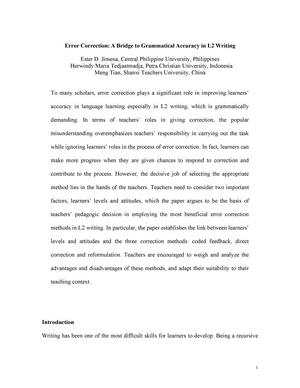Error correction: A bridge to grammatical accuracy in L2 writing
Аннотации
To many scholars, error correction plays a significant role in improving learners’ accuracy in language learning especially in L2 writing, which is grammatically demanding. In terms of teachers’ roles in giving correction, the popular misunderstanding overemphasizes teachers’ responsibility in carrying out the task while ignoring learners’ roles in the process of error correction. In fact, learners can make more progress when they are given chances to respond to correction and contribute to the process. However, the decisive job of selecting the appropriate method lies in the hands of the teachers. Teachers need to consider two important factors, learners’ levels and attitudes, which the paper argues to be the basis of teachers’ pedagogic decision in employing the most beneficial error correction methods in L2 writing. In particular, the paper establishes the link between learners’ levels and attitudes and the three correction methods: coded feedback, direct correction and reformulation. Teachers are encouraged to weigh and analyze the advantages and disadvantages of these methods, and adapt their suitability to their teaching context.
Описание
Conference paper
Suggested Citation
Jimena, E. D. , Tedjaatmadja, H. M. & Tian, M. (2005). Error correction: a bridge to grammatical accuracy in L2 writing [Conference paper]. In International Conference on Language and Communication and Culture:Dialogs and Contexts in Focus, Bangkok.


